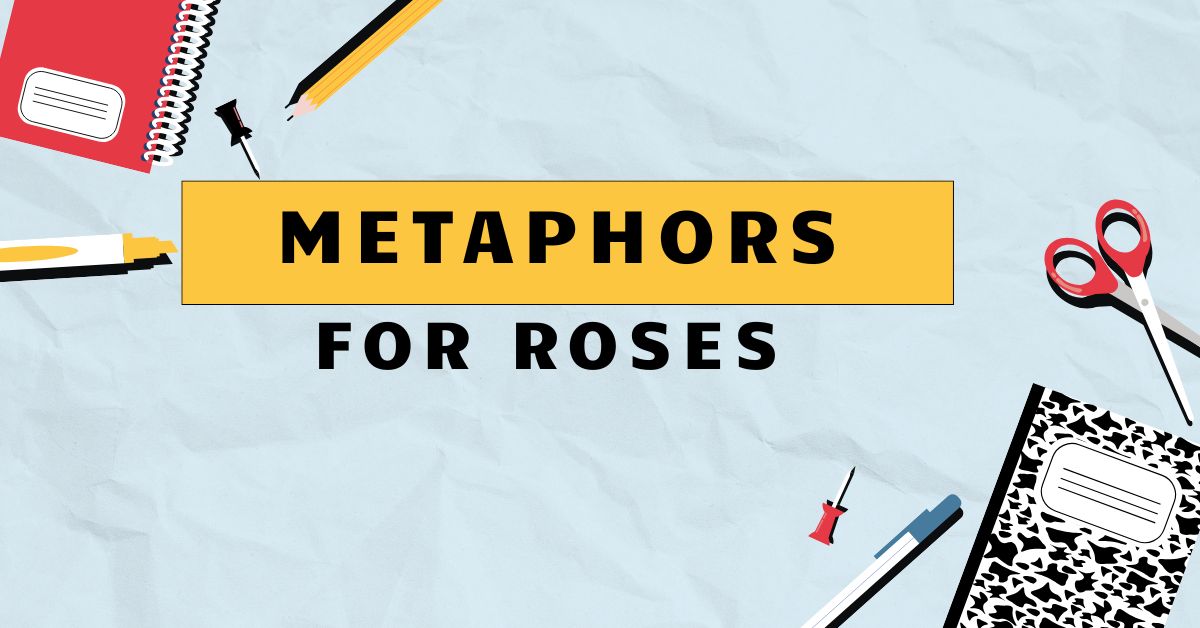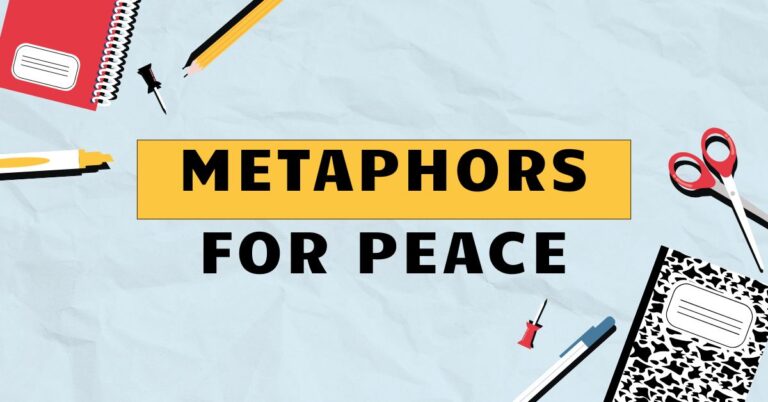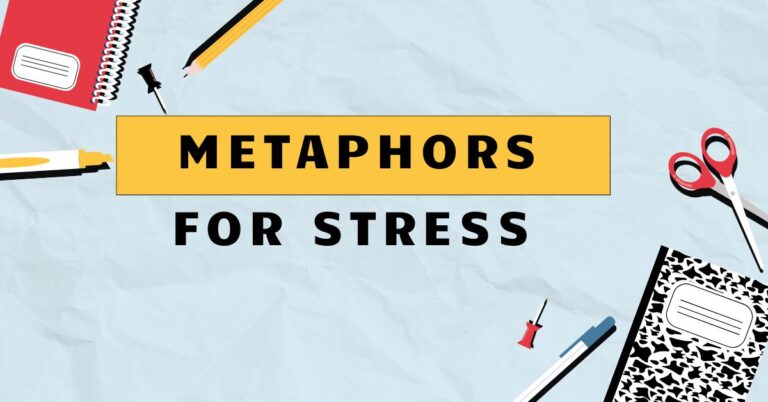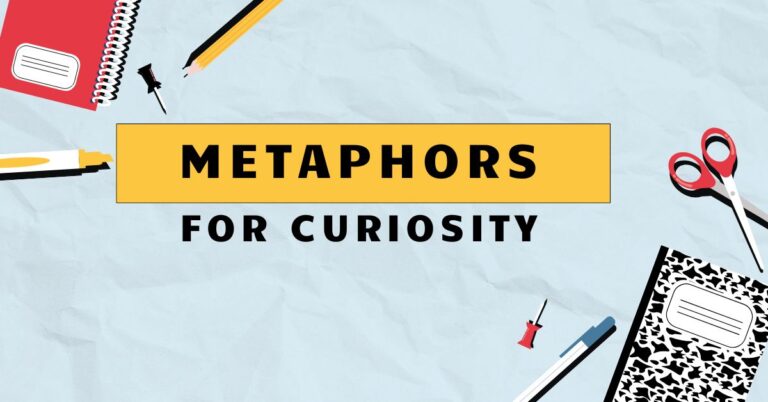31 Metaphors for Roses: Understanding Figurative Language Use
Understanding metaphors is crucial for mastering English, as they add depth and color to communication. Metaphors allow us to understand and describe abstract concepts by relating them to something more concrete and familiar.
This article focuses on metaphors involving roses, exploring how they are used to symbolize various emotions, ideas, and experiences. This guide is perfect for English language learners, creative writers, and anyone interested in enhancing their literary skills and deepening their appreciation for the nuances of language.
Table of Contents
- Introduction
- Definition of Metaphor
- Structural Breakdown of Rose Metaphors
- Types of Rose Metaphors
- Examples of Rose Metaphors
- Usage Rules for Rose Metaphors
- Common Mistakes with Rose Metaphors
- Practice Exercises
- Advanced Topics in Rose Metaphors
- Frequently Asked Questions
- Conclusion
Definition of Metaphor
Ametaphoris a figure of speech that directly compares two unlike things without using “like” or “as.” It asserts that one thing *is* another, creating a vivid image or deeper understanding. Metaphors are essential in poetry, literature, and everyday language, enriching communication by conveying complex ideas in a relatable way.
They work by transferring qualities from one concept to another, often revealing hidden similarities or providing new perspectives.
Metaphors can be classified based on their explicitness. Adirect metaphorexplicitly states the comparison, while animplied metaphorsuggests the comparison without directly stating it.
For example, “He is a lion” is a direct metaphor, while “He roared his disapproval” implies that he is like a lion.
The function of a metaphor is to provide insight, evoke emotion, and make language more engaging. By understanding metaphors, we can better interpret literature, improve our writing, and communicate more effectively.
Metaphors are used in various contexts, from casual conversations to formal speeches, adding layers of meaning and nuance to our words.
Structural Breakdown of Rose Metaphors
Rose metaphors typically involve two main components: thetenorand thevehicle. The tenor is the subject being described (e.g., love, beauty), and the vehicle is the rose, which is used to represent the tenor.
The connection between the tenor and vehicle is based on shared characteristics or associations.
For example, in the metaphor “Her smile was a rose in bloom,” the tenor is “her smile,” and the vehicle is “a rose in bloom.” The shared characteristics are beauty, radiance, and freshness. The metaphor suggests that her smile is beautiful, radiant, and refreshing, like a blooming rose.
The effectiveness of a rose metaphor depends on the audience’s familiarity with roses and their symbolic meanings. Roses are widely associated with love, beauty, and passion, making them a versatile vehicle for conveying various emotions and ideas.
However, the specific meaning of a rose metaphor can vary depending on the context and the specific qualities of the rose being emphasized (e.g., color, thorns, fragrance).
Types of Rose Metaphors
Love and Romance
Roses are strongly associated with love and romance, making them a common metaphor for romantic feelings, relationships, and experiences. Red roses, in particular, symbolize passion and deep affection.
Rose metaphors in this category often emphasize the beauty, tenderness, and intoxicating qualities of love.
Beauty and Perfection
Roses are often used to represent beauty, elegance, and perfection. Their intricate petals, vibrant colors, and delicate fragrance make them a symbol of aesthetic appeal.
Rose metaphors in this category highlight the flawless and captivating nature of beauty, whether it is found in a person, an object, or an experience.
Fragility and Transience
While roses are beautiful, they are also delicate and short-lived. This makes them a fitting metaphor for the fragility and transience of life, beauty, and love.
Rose metaphors in this category often evoke a sense of melancholy and the fleeting nature of precious moments.
Secrecy and Mystery
The tightly furled petals of a rosebud can symbolize secrecy and mystery, hinting at hidden depths and untold stories. Rose metaphors in this category often suggest that there is more than meets the eye and that some things are best left unsaid.
Pain and Sacrifice
Roses have thorns, which can represent the pain and sacrifices that often accompany love and beauty. Rose metaphors in this category acknowledge the bittersweet nature of life and the challenges that must be overcome to achieve something worthwhile.
Examples of Rose Metaphors
Love and Romance Examples
The following table provides examples of rose metaphors related to love and romance. These examples illustrate how roses can be used to symbolize various aspects of romantic relationships, from the initial spark of attraction to the enduring bonds of commitment.
| Metaphor | Explanation |
|---|---|
| Her love was a rose, forever in bloom. | Her love was constant and always beautiful. |
| Their romance was a thorny rose, beautiful but painful. | Their relationship was passionate but filled with challenges. |
| He offered her a rose, a symbol of his affection. | He gave her a rose to show his love for her. |
| Their love blossomed like a rose in spring. | Their love grew quickly and beautifully. |
| She was the rose in his garden of life. | She was the most beautiful and cherished part of his life. |
| Their first kiss was a rose petal soft and sweet. | Their first kiss was gentle and delightful. |
| The memory of their love was a dried rose, still fragrant. | The memory of their love was still cherished, even though it was in the past. |
| His heart was a rose, wounded by her departure. | He was deeply hurt by her leaving. |
| Their love story was a rose garden, filled with beauty and thorns. | Their relationship had both wonderful and difficult moments. |
| She wore a rose, a testament to her love for him. | She wore a rose to show her love for him. |
| Their love grew like a climbing rose, reaching new heights. | Their love continued to develop and strengthen over time. |
| He watered their love with roses, nurturing their bond. | He showed his love and care, helping their relationship thrive. |
| Their affection was a bouquet of roses, each bloom a cherished memory. | Their love was composed of many beautiful and meaningful moments. |
| Her laughter was a rose, filling his heart with joy. | Her laughter was delightful and brought him great happiness. |
| Their love was a rose, a beacon of hope in the darkness. | Their love provided comfort and optimism during difficult times. |
| His admiration for her was a rose, a symbol of his respect. | He greatly admired and respected her, as symbolized by the rose. |
| Their love was a rose, constantly refreshed by their shared dreams. | Their love was continually renewed by their common aspirations. |
| She cherished their love like a rare rose, protecting it with care. | She treasured their love, safeguarding it from harm. |
| Their love was a rose, its petals unfurling with each passing day. | Their love continued to reveal its beauty and depth over time. |
| He gave her a rose, a silent promise of his unwavering devotion. | He offered her a rose as a symbol of his steadfast commitment. |
| Their love was a rose, its fragrance lingering long after they parted. | The memory of their love remained with them, even when they were apart. |
| He watched her bloom like a rose, falling deeper in love each day. | He saw her grow more beautiful and captivating, increasing his love for her. |
| Their love was a rose, nurtured by understanding and trust. | Their love thrived because of their mutual understanding and trust. |
| She wore his love like a rose, proudly displaying her affection. | She openly showed her love for him, wearing it as a badge of honor. |
| Their love was a rose, its roots running deep into their shared history. | Their love was strong and enduring, based on their long-standing connection. |
Beauty and Perfection Examples
The following table illustrates rose metaphors related to beauty and perfection. These metaphors use the rose’s inherent beauty to describe other things that are considered beautiful or perfect.
| Metaphor | Explanation |
|---|---|
| Her beauty was a rose, captivating all who saw her. | Her beauty was stunning and attracted everyone’s attention. |
| The sunset was a rose painted across the sky. | The sunset was beautiful and colorful, like a rose. |
| The poem was a rose, perfect in its form and expression. | The poem was beautifully written and perfectly expressed its message. |
| Her voice was a rose, sweet and melodious. | Her voice was pleasant and soothing to listen to. |
| The painting was a rose, a masterpiece of color and light. | The painting was exquisitely crafted and a work of art. |
| The dancer moved like a rose, graceful and elegant. | The dancer’s movements were fluid and beautiful. |
| The melody was a rose, unfolding its beauty with each note. | The melody was lovely and revealed its beauty gradually. |
| The garden was a rose, a symphony of colors and fragrances. | The garden was filled with beautiful flowers and scents. |
| Her smile was a rose, brightening up the room. | Her smile was radiant and made the room more cheerful. |
| The sculpture was a rose, a testament to the artist’s skill. | The sculpture was expertly crafted and showed the artist’s talent. |
| The architecture was a rose, its design both intricate and harmonious. | The architecture was complex and beautifully balanced. |
| Her dress was a rose, its fabric flowing with elegance. | Her dress was graceful and stylish, like a rose in bloom. |
| The landscape was a rose, its scenery breathtakingly beautiful. | The scenery was stunning and picturesque, like a rose in full bloom. |
| The performance was a rose, its execution flawless and captivating. | The performance was perfect and held the audience’s attention. |
| The artwork was a rose, a symbol of creativity and inspiration. | The artwork represented artistic expression and inventive thinking. |
| Her personality was a rose, charming and delightful to all who met her. | Her character was pleasant and attractive, endearing her to others. |
| The city was a rose, its culture rich and vibrant. | The city’s culture was diverse, colorful, and lively. |
| The event was a rose, perfectly organized and executed. | The event was flawlessly planned and carried out. |
| The experience was a rose, unforgettable in its beauty and impact. | The experience was remarkably beautiful and left a lasting impression. |
| The gesture was a rose, kind and thoughtful in its intent. | The action was considerate and well-intentioned. |
| The moment was a rose, exquisite and fleeting. | The moment was exceptionally beautiful but brief. |
| Her presence was a rose, graceful and serene. | Her demeanor was elegant and peaceful. |
| The memory was a rose, cherished for its beauty and sentiment. | The memory was treasured for its loveliness and emotional value. |
Fragility and Transience Examples
The following table provides examples of rose metaphors related to fragility and transience. These metaphors use the rose’s delicate nature and short lifespan to symbolize things that are easily broken or don’t last long.
| Metaphor | Explanation |
|---|---|
| Life is a rose, beautiful but fleeting. | Life is precious but doesn’t last forever. |
| Beauty is a rose, fading with time. | Beauty is temporary and diminishes as time passes. |
| Happiness is a rose, easily crushed. | Happiness is delicate and can be easily destroyed. |
| Youth is a rose, quickly wilting. | Youth is short-lived and fades away quickly. |
| Memories are roses, their fragrance fading over time. | Memories become less vivid as time goes on. |
| Dreams are roses, easily shattered. | Dreams are fragile and can be easily destroyed. |
| Hope is a rose, delicate and vulnerable. | Hope is fragile and can be easily lost. |
| Love is a rose, its petals falling one by one. | Love can fade away gradually over time. |
| Trust is a rose, easily broken. | Trust is fragile and can be easily destroyed. |
| Promises are roses, wilting if not kept. | Promises are easily broken if not fulfilled. |
| Friendships are roses, needing care to avoid withering. | Friendships require attention and effort to sustain. |
| Opportunities are roses, their moment of bloom brief. | Opportunities are short-lived and must be seized quickly. |
| Emotions are roses, their intensity fading over time. | Emotions become less intense as time passes. |
| Inspiration is a rose, its spark easily extinguished. | Inspiration is easily lost if not nurtured. |
| Creativity is a rose, needing constant cultivation. | Creativity requires continuous effort to develop. |
| Ambitions are roses, their petals falling with setbacks. | Ambitions can diminish with challenges and failures. |
| Success is a rose, its peak short-lived. | Success is often temporary and doesn’t last indefinitely. |
| Peace is a rose, easily disrupted by conflict. | Peace is fragile and can be easily broken by disagreements. |
| Kindness is a rose, its impact fleeting but meaningful. | Acts of kindness are temporary but significant. |
| Patience is a rose, easily tested and worn thin. | Patience can be easily exhausted and strained. |
Secrecy and Mystery Examples
The following table provides examples of rose metaphors related to secrecy and mystery. These metaphors use the rose’s hidden depths and complex layers to symbolize secrets or mysteries.
| Metaphor | Explanation |
|---|---|
| Her past was a rose, its petals hiding thorns and beauty. | Her past contained both painful and beautiful secrets. |
| The truth was a rose, its petals concealing a hidden core. | The truth was complex and had a hidden meaning. |
| The secret was a rose, its fragrance hinting at untold stories. | The secret was intriguing and suggested hidden narratives. |
| The mystery was a rose, its layers unfolding slowly. | The mystery was complex and revealed itself gradually. |
| Her silence was a rose, its beauty masking a hidden pain. | Her silence concealed a deep-seated sorrow. |
| The conspiracy was a rose, its thorns protecting a dark secret. | The conspiracy guarded a sinister truth. |
| The enigma was a rose, its petals impossible to count. | The enigma was complex and difficult to understand. |
| Her eyes were roses, their depths holding untold secrets. | Her eyes held hidden thoughts and emotions. |
| The unsolved case was a rose, its petals leading to dead ends. | The case was complex and difficult to solve. |
| The old house was a rose, its walls whispering forgotten stories. | The house held many untold stories from the past. |
Pain and Sacrifice Examples
The following table provides examples of rose metaphors related to pain and sacrifice. These metaphors use the rose’s thorns to symbolize the pain and sacrifices that often accompany beauty and love.
| Metaphor | Explanation |
|---|---|
| Love is a rose, beautiful but with thorns that prick. | Love is wonderful but can also bring pain. |
| Success is a rose, earned through sacrifice and pain. | Success requires hard work and overcoming challenges. |
| Beauty is a rose, paid for with tears and effort. | Achieving beauty often involves pain and dedication. |
| Life is a rose, its joys intertwined with sorrows. | Life contains both happiness and sadness. |
| His heart was a rose, wounded by betrayal. | He was deeply hurt by someone’s disloyalty. |
| Her smile was a rose, hiding the thorns of her past. | Her smile concealed the pain she had experienced. |
| The journey was a rose, its beauty marred by hardship. | The journey was beautiful but filled with difficulties. |
| Their bond was a rose, strengthened by shared pain. | Their relationship was fortified by overcoming challenges together. |
| Her forgiveness was a rose, offered despite the thorns. | She forgave someone, despite the pain they had caused. |
| The victory was a rose, won at a great cost. | The victory was achieved through significant sacrifice. |
Usage Rules for Rose Metaphors
When using rose metaphors, it’s important to consider the context and the intended meaning. Here are some guidelines to follow:
- Choose the right color: Different colors of roses have different meanings. Red roses symbolize love and passion, while white roses symbolize purity and innocence. Consider the color of the rose when crafting your metaphor.
- Consider the thorns: Roses have thorns, which can represent pain, sacrifice, or challenges. If you want to convey a sense of hardship or difficulty, include the thorns in your metaphor.
- Think about the fragrance: The fragrance of a rose can evoke feelings of joy, nostalgia, or romance. Use the fragrance to enhance the emotional impact of your metaphor.
- Be creative: Don’t be afraid to experiment with different combinations of tenor and vehicle. The most effective metaphors are often those that are unexpected and original.
- Maintain Clarity: Ensure the comparison between the rose and the subject is clear and understandable to your audience. Overly complex or obscure metaphors can confuse readers.
- Suit the Tone: Use rose metaphors appropriately for the tone of your writing. They are generally more suitable for poetic, romantic, or reflective contexts rather than technical or argumentative writing.
- Avoid Clichés: While roses are a common symbol, try to avoid overused phrases. Strive for originality in your metaphors to make them more impactful.
Common Mistakes with Rose Metaphors
Here are some common mistakes to avoid when using rose metaphors:
- Overusing rose metaphors: While roses are a versatile symbol, overuse can make your writing repetitive and predictable. Use them sparingly and in conjunction with other types of figurative language.
- Mixing metaphors: Avoid combining rose metaphors with other unrelated metaphors, as this can create confusion and weaken the impact of your writing.
- Using clichés: Avoid using overused phrases involving roses, such as “coming up roses” or “a bed of roses.” These phrases have lost their impact and can make your writing sound unoriginal.
- Ignoring the context: Ensure that your rose metaphors are appropriate for the context and the intended audience. A metaphor that is effective in a poem may not be suitable for a scientific paper.
Here’s a table illustrating common mistakes with rose metaphors:
| Incorrect | Correct | Explanation |
|---|---|---|
| Her life was a bed of roses but also a stormy sea. | Her life was a bed of roses. | Mixing metaphors (roses and stormy seas) creates confusion. |
| His career was coming up roses. | His career was blossoming like a well-tended rose. | Avoid clichés like “coming up roses”; opt for a more original expression. |
| The scientific report was a rose. | The scientific report was thorough and well-researched. | Rose metaphors are generally unsuitable for technical writing. |
Practice Exercises
Test your understanding of rose metaphors with these practice exercises:
-
Question 1: Complete the metaphor: “Her laughter was like a __________, filling the room with joy.”
-
Question 2: What does it mean when someone says, “Their love was a thorny rose”?
-
Question 3: Create a metaphor using a rose to describe a beautiful sunset.
-
Question 4: What does the metaphor “Life is a rose, beautiful but fleeting” suggest about life?
-
Question 5: Complete the metaphor: “The secret was a __________, its fragrance hinting at untold stories.”
-
Question 6: Explain the meaning of the metaphor: “His heart was a rose, wounded by betrayal.”
-
Question 7: Create a metaphor using a rose to describe a person’s personality.
-
Question 8: What quality of a rose is emphasized in the metaphor “Youth is a rose, quickly wilting”?
-
Question 9: What does it imply when someone says, “Their friendship is a rose, needing care to avoid withering”?
-
Question 10: Create a metaphor using a rose to describe an opportunity.
Answer Key:
-
Answer 1: rose
-
Answer 2: Their relationship was passionate but filled with challenges.
-
Answer 3: The sunset was a rose painted across the sky in vibrant hues.
-
Answer 4: Life is precious but doesn’t last forever.
-
Answer 5: rose
-
Answer 6: He was deeply hurt by someone’s disloyalty.
-
Answer 7: Her personality was a rose, charming and delightful to all who met her.
-
Answer 8: The transience or fleeting nature of youth.
-
Answer 9: Their friendship requires attention and effort to sustain.
-
Answer 10: Opportunities are roses, their moment of bloom brief.
Here is another practice exercise table:
| Question | Answer |
|---|---|
| What feeling is often associated with red roses in metaphors? | Love and passion |
| How can you use a rose metaphor to describe a complex problem? | The problem was a rose, its layers unfolding slowly to reveal the core issue. |
| What does it mean if someone says, “Her words were roses, soft and fragrant”? | Her words were gentle and pleasing. |
| Describe a situation where a rose metaphor could represent sacrifice. | He gave up his dreams for her, a sacrifice as beautiful and painful as a rose offering its thorns. |
| How can you use a rose metaphor to describe a fading memory? | The memory was a rose, its fragrance fading with time. |
| What does it mean to say “Their relationship was a rose garden”? | Their relationship was full of beauty and joy but also had its share of challenges and difficulties. |
| Create a metaphor using a rose to describe a person’s secret. | Her secret was a rosebud, tightly closed and hiding its beauty. |
| How could you describe a moment of inspiration using a rose metaphor? | Inspiration bloomed in her mind like a sudden rose, vibrant and unexpected. |
| What attribute of a rose is highlighted when describing fragility? | Its delicate petals |
| How can you use a rose to describe someone’s beauty that is both alluring and dangerous? | She was a rose, beautiful and captivating, but with thorns that could wound. |
Advanced Topics in Rose Metaphors
For advanced learners, consider exploring the following topics:
- Extended metaphors: An extended metaphor is a metaphor that is developed over several lines or paragraphs. Experiment with creating extended rose metaphors to convey complex ideas and emotions.
- Symbolism of different rose colors: Research the symbolism of different rose colors, such as yellow, pink, and orange, and incorporate these meanings into your metaphors.
- Cultural variations in rose symbolism: Explore how roses are viewed in different cultures and how these cultural variations can influence the interpretation of rose metaphors.
- Subverted metaphors: Challenge traditional rose metaphors by using them in unexpected or ironic ways. This can create a sense of surprise and add depth to your writing.
Frequently Asked Questions
-
Question 1: What is the difference between a metaphor and a simile?
Answer: A metaphor directly compares two unlike things without using “like” or “as,” while a simile uses “like” or “as” to make the comparison. For example, “He is a lion” is a metaphor, while “He is like a lion” is a simile.
-
Question 2: Why are roses often used in metaphors?
Answer: Roses are widely recognized symbols of love, beauty, and passion, making them a versatile vehicle for conveying various emotions and ideas. Their intricate petals, vibrant colors, and delicate fragrance also contribute to their symbolic appeal.
-
Question 3: How can I create effective rose metaphors?
Answer: To create effective rose metaphors, consider the context, the intended meaning, and the specific qualities of the rose you want to emphasize. Choose the right color, consider the thorns, think about the fragrance, and be creative.
-
Question 4: What are some common clichés involving roses?
Answer: Some common clichés involving roses include “coming up roses,” “a bed of roses,” and “stop and smell the roses.” These phrases have lost their impact and should be avoided in favor of more original expressions.
-
Question 5: Can rose metaphors be used in all types of writing?
Answer: Rose metaphors are generally more suitable for poetic, romantic, or reflective writing. They may not be appropriate for technical or scientific writing, where clarity and precision are paramount.
-
Question 6: How do different colors of roses affect the meaning of a metaphor?
Answer: Different colors of roses have different symbolic meanings. Red roses symbolize love and passion, white roses symbolize purity and innocence, yellow roses symbolize friendship, and pink roses symbolize gratitude. Consider the color of the rose when crafting your metaphor to convey the intended meaning.
-
Question 7: How can I avoid overusing rose metaphors?
Answer: To avoid overusing rose metaphors, use them sparingly and in conjunction with other types of figurative language. Experiment with different symbols and vehicles to add variety to your writing.
-
Question 8: What is an extended metaphor, and how can I create one using roses?
Answer: An extended metaphor is a metaphor that is developed over several lines or paragraphs. To create an extended rose metaphor, choose a specific aspect of a rose (e.g., its growth, its fragrance, its thorns) and develop it into a sustained comparison throughout your writing.
-
Question 9: How can the thorns of a rose be used effectively in a metaphor?
Answer: The thorns of a rose can represent challenges, pain, or sacrifices. When using thorns in a metaphor, consider the context and how these elements contribute to the overall meaning. For example, “Their love was a rose, beautiful but with thorns that reminded them of the sacrifices they made.”
-
Question 10: Are there any specific cultural interpretations of roses that I should be aware of when using them in metaphors?
Answer: Yes, different cultures may have unique interpretations of roses. In some cultures, roses may be associated with mourning or remembrance, while in others, they are primarily symbols of love and beauty. Researching these cultural nuances can help you use rose metaphors more effectively and avoid unintended meanings.
Conclusion
Understanding and using metaphors involving roses can greatly enhance your ability to communicate effectively and creatively. Roses, with their rich symbolism and versatile qualities, provide a powerful tool for expressing complex emotions and ideas.
By mastering the art of rose metaphors, you can add depth, color, and nuance to your writing and speech.
Remember to consider the context, the intended meaning, and the specific qualities of the rose when crafting your metaphors. Avoid clichés and overused phrases, and don’t be afraid to experiment with different combinations of tenor and vehicle.
With practice and attention to detail, you can unlock the full potential of rose metaphors and elevate your language skills to new heights. Embrace the beauty and complexity of figurative language, and let your words bloom like roses.







